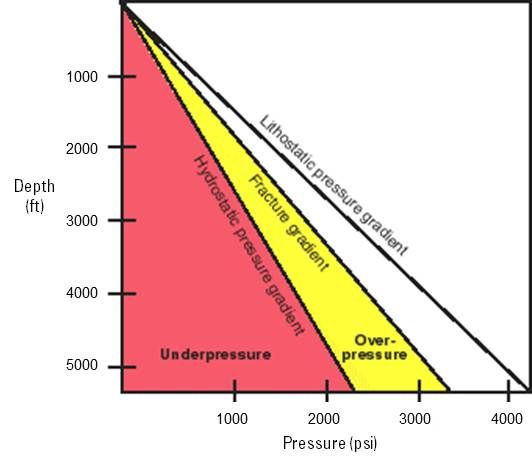1. n. [Geology]
The change in pressure per unit of depth, typically in units of psi/ft or kPa/m. Pressure increases predictably with depth in areas of normal pressure. The normal hydrostatic pressure gradient for freshwater is 0.433 psi/ft, or 9.792 kPa/m, and 0.465 psi/ft for water with 100,000 ppm total dissolved solids (a typical Gulf Coast water), or 10.516 kPa/m. Deviations from normal pressure are described as high or low pressure.
See related terms: abnormal pressure, formation pressure, geopressure gradient, lithostatic pressure, normal pressure, pore pressure

2. n. [Well Testing]
A change in pressure as a function of distance. This can refer to
See related terms: formation fluid, pore pressure, production log